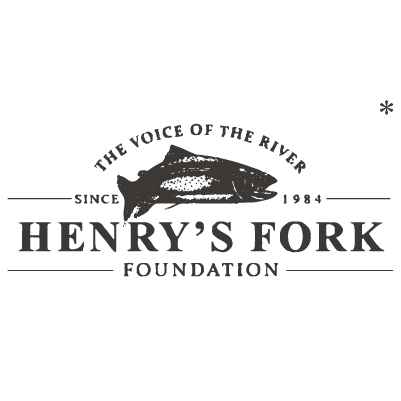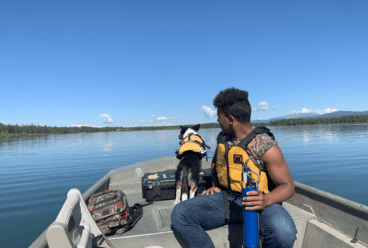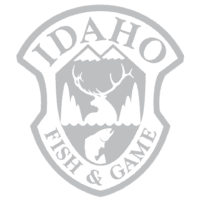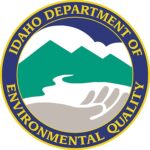Overview
-
Status
Ongoing -
Estimated Completion
2025 -
Location
Idaho -
Grants Received
$50,000 -
Total Budget
$156,195 -
Friends Group
Henry's Fork Foundation -
Partners
Idaho Department of Fish and Game, Idaho Department of Environmental Quality
Research shows that Island Park Reservoir is the lynchpin of fisheries in the Henry’s Fork System, and RFHP funding will continue our research and drought mitigation efforts that have already proven effective for conserving and restoring important sportfish in Island Park Reservoir. Each Farms and Fish project results in an exponential increase in sportfish populations; 1,000 acre-feet saved in Island Park Reservoir due to this Farms and Fish project or Precision Management results in an approximate 5% cumulative “return” for fish populations. Outcomes of this project will result both in scientific advances as well as effective conservation and improvement of sportfish populations.
- Reduce Island Park Reservoir drawdown to no more than 60,000 acre feet out of a total capacity of 135,000 acre-feet through the HFF’s community-based, collaborative, water-saving program called “Farms and Fish”, specifically building out precision management projects based on increasing efficiency at the farm field level, thereby reducing irrigation demand and overall Island Park Reservoir drawdown.
- Monitor the efficacy of management actions on Island Park Reservoir by continuing thermal and oxygen habitat monitoring
- Optimize management of fish habitat in Island Park Reservoir by developing predictive models of reservoir water quality and fish habitat that predict the effects of different management strategies on fish habitat availability
Photo Gallery
Why It Matters
Island Park Reservoir and its tributaries are a popular recreational angling location, especially for families, helping make the Henry’s Fork Watershed the most popular fishery in Idaho and supporting a local fishing-based economy worth around $30 million (Grunder et al. 2008, Loomis 2006, Van Kirk et al. 1999, Van Kirk et al. 2019a). The fishery has declined since the 1980s when Idaho Department of Fish and Game (IDFG) data indicates it was a fishery of significant state interest due to good catches of large rainbow trout (Oncorhynchus mykiss), cutthroat trout (Oncorhynchus clarkii spp.), and kokanee salmon (Oncorhynchus nerka) (High et al. 2015, Flinders et al. 2016). Management priorities are restoring the fishery to its former status and accurately quantifying fisheries benefits resulting from water conservation projects (High et al. 2015, Flinders et al. 2016).
Threats
Excessive annual drawdowns negatively affect water quality and fish habitat in Island Park Reservoir (44.418996° N, 111.396496 W°, Fremont County, Idaho, in the Western Mountain ecoregion, Figure 1) which is managed by the US Bureau of Reclamation to meet downstream irrigation water needs.
In 2021, the Henry’s Fork Foundation used a grant from Friends of Reservoirs and the Reservoir Fish Habitat Partnership (RFHP) to prove the efficacy of irrigation efficiency and precision management projects as a best management practice for improving fish refuge habitat in Island Park Reservoir. The Henry’s Fork Foundation found extreme water level fluctuations reduce thermal refugia for coldwater sportfish such as kokanee salmon (Figure 2), thereby reducing kokanee salmon populations (Figure 3), decoupling nutrient cycling between Island Park Reservoir and its tributaries via migratory fish that rely on thermal refugia (Figure 4), and accelerating reservoir “aging” via increased sedimentation and eutrophication (Figure 5).
What FOR Is Doing
The Henry’s Fork Foundation (HFF) is a 501(c)(3) nonprofit organization whose mission, ability to leverage additional funding, expertise, and skills make it uniquely positioned to effectively address the issues at Island Park Reservoir. Our mission is to conserve, restore, and protect the unique fishery, wildlife, and aesthetic qualities of the Henry’s Fork of the Snake River watershed. HFF is supported by donations from its 2,500 members and grants from private foundations and public agencies. Since HFF first hired full-time staff in 1992, science-based collaboration has been the HFF’s primary mode of mission accomplishment. With Fremont-Madison Irrigation District (FMID), HFF co-facilitates the Henry’s Fork Watershed Council, which has become a nationally recognized model of collaborative watershed management and community outreach.
The HFF’s science-based work is supported by a science and technology program that includes an in-house water quality/aquatic ecology laboratory and is staffed by four full-time equivalent employees, two graduate students, and as many as six undergraduate interns. The program is directed by Dr. Rob Van Kirk, who has a 25-year record of conducting a wide range of research in the Upper Snake River Watershed to inform conservation and management of fisheries and water resources. John McLaren and Daniel Wilcox are the project managers. John is a PhD student in the Watershed Sciences Department and Ecology Center program at Utah State University, specializing in stream and fish ecology. Daniel is the Farms and Fish Program Manager at HFF and works hand in hand with farmers, ranchers, and other water rights holders to reduce consumptive irrigation water use.
Our project goal is to continue improving fish habitat and water quality in Island Park Reservoir by building up the HFF’s “Farms and Fish” program—a proven portfolio of small-scale, on-farm, data-driven, collaborative conservation projects to reduce annual drawdown to no more than 60,000 acre-feet out of 135,000 acre feet (~45%) (Figure 6). Reducing drawdown to no more than 45% of full capacity has been shown to be beneficial to downstream water quality (Van Kirk 1996) and reservoir fisheries (Figure 3). Reducing extreme drawdown represents the easiest, most direct mechanism to maintaining kokanee salmon and other coldwater sportfish habitat in Island Park Reservoir (Figure 7). In 2021, the Farms and Fish program—with help from the RFHP—reduced Island Park Reservoir drawdown by nearly 30,000 acre-feet, thereby potentially improving future kokanee salmon spawning run numbers by nearly 150% (Figure 3). Beyond drawdown reduction, an additional goal is to improve our understanding of the extent to which the Farms and Fish program improve water quality and fish habitat in Island Park Reservoir as well as in its outflow: the economically-important Henry’s Fork River. We aim to develop new mechanistic and predictive models water quality and fish habitat, which will allow for forecasting of fish habitat in Island Park Reservoir given known climatic, hydrologic, agricultural, management, and limnological conditions. Transitioning from reactive monitoring projects to proactive predictive modeling would assist our management partners in understanding the consequences of management alternatives. Mechanistic and predictive models allow for a projection of how effective different water conservation and management strategies could be, thereby assisting the HFF to optimize and prioritize small-scale, on-farm precision management and water-conservation projects.
Objectives
With the help of Reservoir Fish Habitat Partnership (RFHP) funding, HFF will complete the following objectives:
- Reduce Island Park Reservoir drawdown to no more than 60,000 acre feet out of a total capacity of 135,000 acre-feet by continuing build-out of the HFF’s collaborative water-saving program called “Farms and Fish”, specifically via precision management projects based on increasing efficiency at the farm field level, thereby reducing irrigation demand and overall Island Park Reservoir drawdown.
- Monitor the efficacy of management actions on Island Park Reservoir by continuing thermal and oxygen habitat monitoring
- Improve precision management of Island Park Reservoir by developing predictive models of reservoir water quality and fish habitat that predict the effects of different management strategies on fish habitat availability
Completion of these objectives will allow us to continue creating measurable improvements in water quality and fish habitat in a valuable fishery resource, reduce management uncertainty, and potentially restore Island Park Reservoir’s fishery to a quality not seen since the 1980s. In addition, we aim to develop valuable predictive capacity which will greatly increase the efficiency and efficacy of on-farm projects to improve water quality and fish habitat in Island Park Reservoir, thereby refining both irrigation and reservoir management.
Research shows that Island Park Reservoir is the lynchpin of fisheries in the Henry’s Fork System (Figure 4), and RFHP funding will continue our research and drought mitigation efforts that have already proven effective for conserving and restoring important sportfish in Island Park Reservoir. Each Farms and Fish project results in an exponential increase in sportfish populations (Figure 3); 1,000 acre-feet saved in Island Park Reservoir due to this Farms and Fish project or Precision Management results in an approximate 5% cumulative “return” for fish populations. Outcomes of this project will result both in scientific advances as well as effective conservation and improvement of sportfish populations.
Methods
Objective 1 continues the expansion of the HFF’s Farms and Fish program to work towards a goal of reduced drawdown of Island Park Reservoir. Through the Farms and Fish Program, HFF has begun working to identify the strategies that have the strongest likelihood of meeting objectives within the watershed. The program specifically aims to have a reduction in consumptive use of water through emerging water markets and alternative crop systems (Van Kirk et al. 2019b). This is done through a diversified portfolio of programs aimed at water saving. New funding will support HFF’s strategic implementation and scaling of on farm, field specific, irrigation technology advancements by placing an incentive to lessen demand on physical storage in Island Park Reservoir and lessen diversions of water from the Henry’s Fork and its tributaries.
RFHP support will fund soil moisture monitor probes, rain gauges, and satellite imagery for the crop seasons of 2023, 2024 and 2025. For crop season 2022 the HFF will install this monitoring infrastructure at the same 5 center pivots where irrigation modeling and scheduling software advisor packages provided by RFHP funding were installed in 2021. The HFF will use private funds as match to initiate this work but will rely on RFHP funding to support the project as it develops for crop seasons 2023 through 2025. Due to ever-increasing farmer participation, we anticipate adding 3 more additional center pivots to the irrigation modeling and scheduling software network in the crop seasons of 2024 and 2025. Soil moisture monitor probes will be placed at predetermined locations and depths in agricultural fields, measure the amount of water in the soil, and thereby improve the precision and efficiency of irrigation while simultaneously improving crop quality, yields, energy conservation, and reducing nutrient leaching. The rain gauges will provide more precise hyper-local data on applied irrigation and direct precipitation to the field. The satellite imagery can pinpoint areas in a field experiencing over watering, under watering, leaks, plugged nozzles, and pumping limitations. This data will be complied together within the cloud-based software application to give the irrigator more tools to help determine if they need to keep irrigating after rainfall events. Modeling and scheduling software advisor packages can control irrigation infrastructure—automatically maintaining soil moisture to slightly less than full field capacity. This is especially useful near the end of the irrigation season in late summer when drawdown of Island Park Reservoir is highest. Any reduction in irrigation demand at this critical juncture would reduce drawdown with simultaneous benefits in crop quality for irrigators (Neibling et al. 2017). Using end of crop season data from University of Idaho, we estimate a savings of .8 to 1.6 inches of water saved per acre. Our obtainable goal of 340 acres utilizing these various tools on 5 center pivots in the Henry’s Fork Watershed would result in an additional potential 136 acre-feet savings in drawdown from Island Park Reservoir over the next 3 years. For crop season 2024 and 2025 we anticipate a bump of 75 more acre-feet of savings each year with the next phase of pivots joining the modeling and scheduling software advisor network. Successful implementation would lead other producers to adopt the same technology, with potentially significant water savings occurring across the hundreds of thousands of irrigable acres in the Henry’s Fork Watershed. Thus, by building upon the software enhancements funded by RFHP in 2021, we can build out an even more resilient efficient irrigation management regimen.
Monitoring Plan
Objective 2 continues the HFF’s comprehensive monitoring of water quality in Island Park Reservoir to assess the efficacy of management actions on Island Park Reservoir. We collect vertical profiles of water temperature, dissolved oxygen, and turbidity in weekly sampling at five locations in Island Park Reservoir: two near the dam at the deepest part of the reservoir, one at the inlet where cool water flows in from the Henrys Fork River, and two on the remote western end of the reservoir where springs create thermal refugia for coldwater fish. Findings from 2021 revealed significant spatial variability in water quality in Island Park Reservoir. Continued monitoring at these five monitoring locations will allow for accurate calculations of the area of fish habitat refugia within the entirety of Island Park Reservoir as the reservoir is drawn down. We also monitor water quality and quantity at the inflows and outflows of Island Park Reservoir using in-situ multiparameter water quality monitoring installations consisting of data-recording YSI EXO2 Sondes. Monitoring will assist in measuring the effectiveness of Farms and Fish water conservation projects at increasing fish populations and fish habitat. In addition, continued monitoring will be critical for accomplishing the goals of Objective 3, which include developing and validating mechanistic and predictive models of water quality and fish habitat. These predictive models will be critical for obtaining a complete understanding the relationship between drawdown and fish habitat availability. A quantification of the benefits to the fishery of reduced drawdown will be useful in the management of Island Park Reservoir to benefit both water users as well as anglers. RFHP support will allow for increased spatial scale of thermal and oxygen water-column profiles, and the expertise needed to collect, process, interpret, and distribute the resultant data.
Outreach Plan
Objective 3 aims to develop mechanistic and predictive models of water quality and fish habitat, thereby assisting in improving precision management and water conservation. Tools like Delft3D and CE-QUAL W2 by the US Geological Survey can produce 3D models of water temperature and dissolved oxygen in reservoir systems given known inputs like depth, local weather, and the quantity and quality of inflows and outflows. Once calibrated using data collected as a part of Objective 2, these models can be used to predict future water quality conditions in Island Park Reservoir given a wide range of scenarios, such as reduced drawdown as a result of water conservation. This transition from reactive monitoring to proactive prediction represents a major step forward for smart management of Island Park Reservoir and its fisheries resources. As an example of collaborative management utilizing project deliverables to achieve conservation outcomes, we intend to use a prediction of water quality in Island Park Reservoir to assist the Idaho Department of Fish and Game (IDFG) in evaluating the predicted efficacy of kokanee salmon stocking in any given year. A prediction of poor conditions could lead to alternative stocking strategies—i.e., fall stocking instead of spring stocking—and a prediction of excellent conditions could encourage additional stocking to take advantage of the conditions. Other than reducing drawdown, increasing the number and survival of stocked kokanee salmon is the most likely to result in higher numbers of adult salmon available for anglers (Figure 3). This hypothetical model has already been discussed with IDFG through the HFF’s proven collaborative management, outreach, and education infrastructure, i.e. the Henry’s Fork Watershed Council. With funding from the RFHP, we expect predictive mechanistic models will be immediately put into use and result in an increase in the efficiency of fisheries management in Island Park Reservoir.
An undergraduate intern presented the findings of our 2021 RFHP-funded work to the public through the HFF’s popular “Summer Seminar Series”, and we intend to continue to engage with community members in reporting our scientific findings (https://www.henrysfork.org/post/4th-annual-hff-summer-seminar-series). We are excited to build in scientific projects that will increase our ability to collaboratively manage Island Park Reservoir with management stakeholders and the general public. Development of predictive mechanistic models also has the potential to positively influence fishery management in the inflows and outflows of Island Park Reservoir. We can combine thermal and oxygen conditions—either current via monitoring or predicted via modelling—with zooplankton and fisheries data from IDFG and invertebrate drift monitoring by the HFF to model “Net Rate of Energy Intake” (NREI). NREI models utilize the simple premise of energy/mass balance, where inputs are the amount of food available (invertebrates, zooplankton, etc.) less the costs of digestion, metabolism, and swimming, all of which are tied to thermal/oxygen conditions. The outputs from NREI models are measures of fish growth potential, measured in Joules/second (J/s). The quantity of fish habitat is inferred as the volume of water (m3) with a positive growth potential (J/s > 0), and the quality of fish habitat is inferred as the magnitude of growth potential (average J/s). Therefore, NREI is an explicit measure of fish growth potential within Island Park Reservoir and its inflows and outflows. Once we know how NREI changes over time, we can understand how available habitat quality and quantity changes with drawdown. Utilizing the outputs of mechanistic models like Delft3D, we can even paint a 3D picture of future fish habitat and growth potential in Island Park Reservoir and its inflows and outflows. Finally, NREI outputs can be used to estimate fish carrying capacity (Wall et al. 2015), including that of kokanee salmon under various drawdown scenarios, allowing managers to predict kokanee salmon run return numbers and identify critical drawdown levels to support a quality fishing experience.
Related News
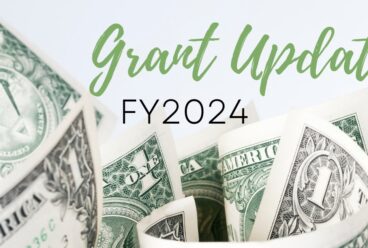
Five FY2024 Large Grants Approved by US Fish and Wildlife Service
Congratulations to five of our members for receiving a 2024 Large Grant for fish habitat work in reservoirs! As you know, the approval and fund allocation process can be long, […]
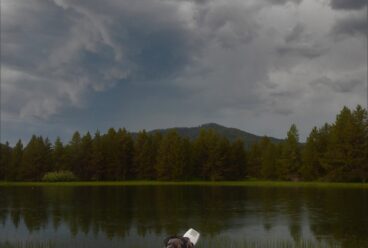
Island Park Project Named as a 2023 Water to Watch!
Friends of Reservoirs is happy to announce that Island Park Reservoir has been named a 2023 Water to Watch! Island Park has been the target of an ongoing effort to […]

FY2024 Projects Submitted to Secretary of Interior
We happy to announce that seven FY2024 grants from Friends of Reservoirs members were submitted as part of the package to the Secretary of Interior! Expansion of North Carolina Wildlife […]
Donate Today
to support similar habitat projects


